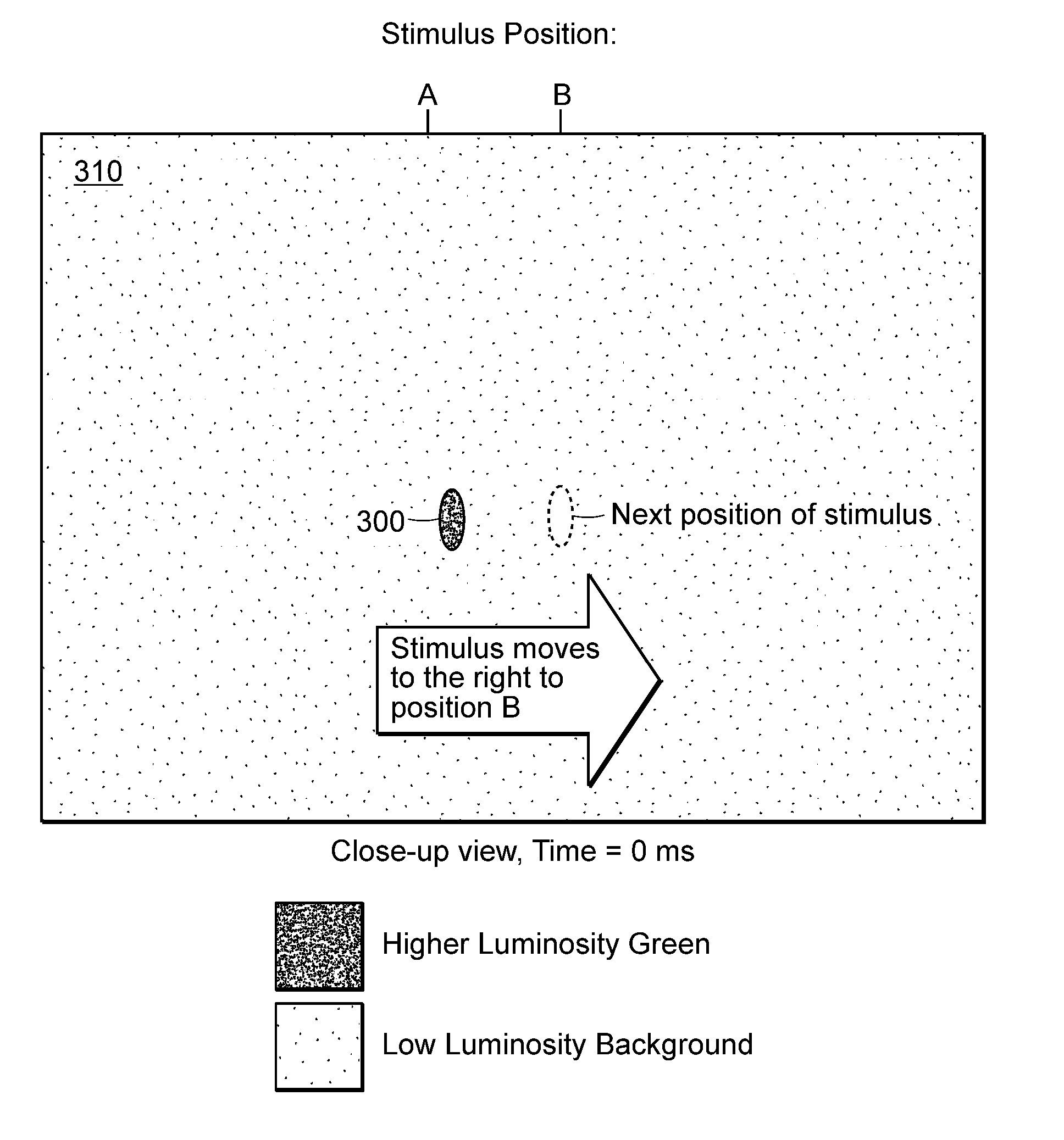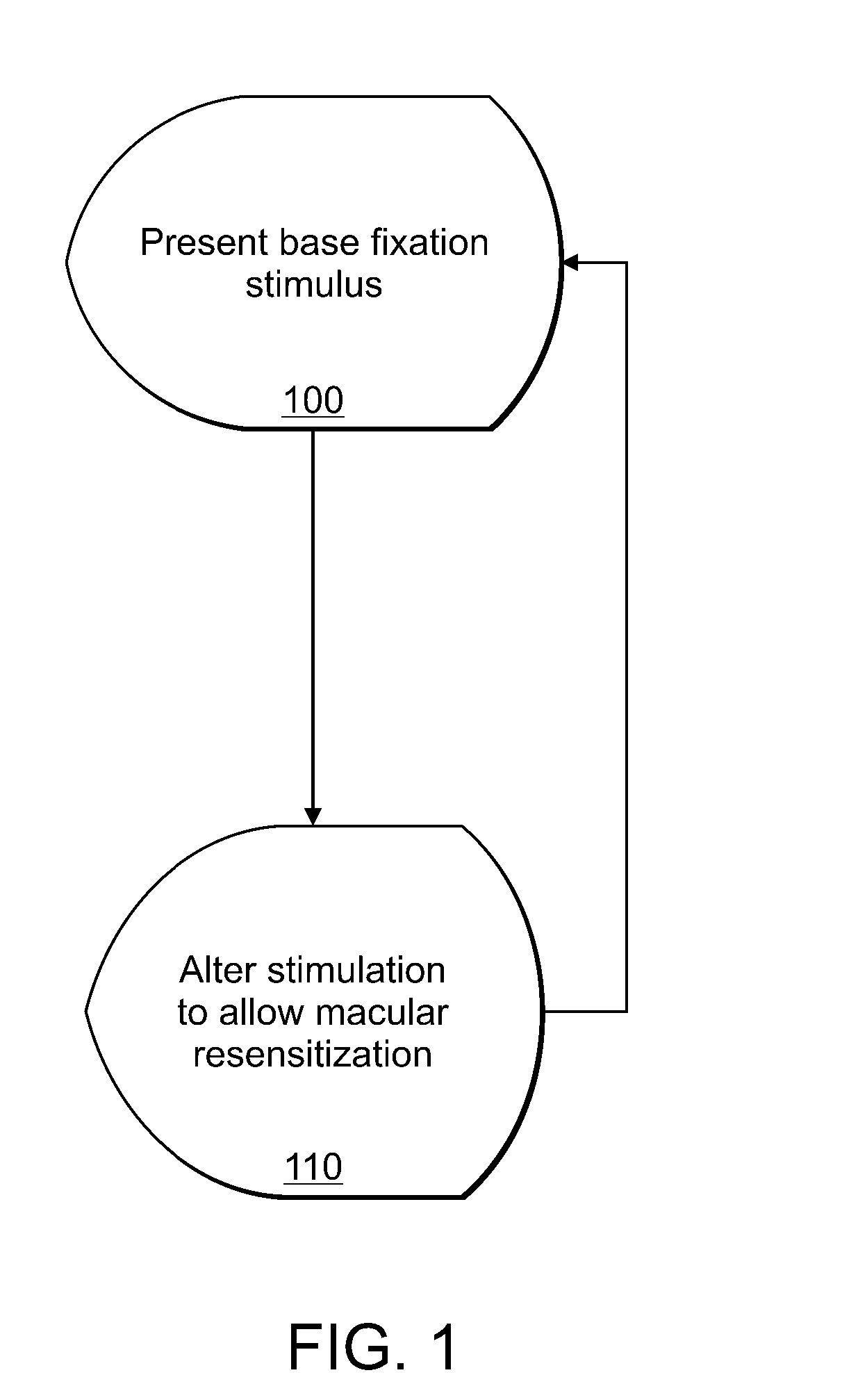Dynamic peripheral stimuli for visual field testing and therapy
a peripheral stimuli and dynamic technology, applied in the field of dynamic peripheral stimuli for visual field testing and therapy, can solve the problems of reducing the accuracy, precision, overall effectiveness of testing, therapeutic visual stimulation programs, or non-therapeutic effects, and requiring constant fixation on the fixed, and achieves the effect of prolonging visual fixation and prolonging visual fixation
- Summary
- Abstract
- Description
- Claims
- Application Information
AI Technical Summary
Benefits of technology
Problems solved by technology
Method used
Image
Examples
example one
[0059] An isoluminous circular spot of small angular subtense (e.g. 11 pixels on an LCD monitor) is programmed to appear at pre-determined locations within the testing or therapy area of the applicable device. The circular spot of light “blinks” on and off at a pre-determined frequency but does not deviate from its original location.
example two
[0060] Two small (e.g. 5 pixels on an LCD screen), vertically elongated ellipses of light (paired side-by side) appear at a pre-determined location within the testing or therapy area and alternate illumination at a pre-determined frequency (e.g., right-left-right-left . . . ). The stimulus is modulated in appearance to trigger the percept of motion but the stimulus remains fixed in its location until detection or a pre-determined length of time.
[0061] In another embodiment of the invention, a frequency doubling grating may be used as a fixation stimulus in a way that creates an optical illusion. FIG. 21 shows a frequency doubling grating 850 as displayed upon a computer display in a brief moment of time. Like the frequency doubling gratings used for FDT, the spatial luminosity phase of the frequency doubling grating 850 is cycled above the critical flicker frequency, e.g., 25 Hz, to create a frequency doubling optical illusion. FIG. 22 shows how such an optical illusion might appea...
PUM
 Login to View More
Login to View More Abstract
Description
Claims
Application Information
 Login to View More
Login to View More - R&D
- Intellectual Property
- Life Sciences
- Materials
- Tech Scout
- Unparalleled Data Quality
- Higher Quality Content
- 60% Fewer Hallucinations
Browse by: Latest US Patents, China's latest patents, Technical Efficacy Thesaurus, Application Domain, Technology Topic, Popular Technical Reports.
© 2025 PatSnap. All rights reserved.Legal|Privacy policy|Modern Slavery Act Transparency Statement|Sitemap|About US| Contact US: help@patsnap.com



